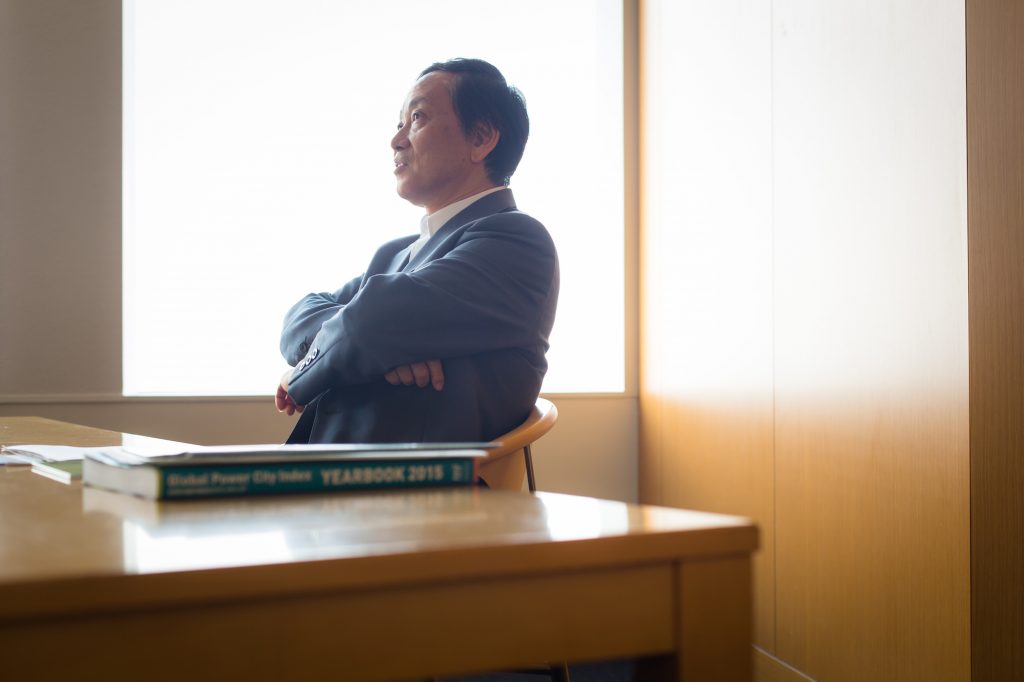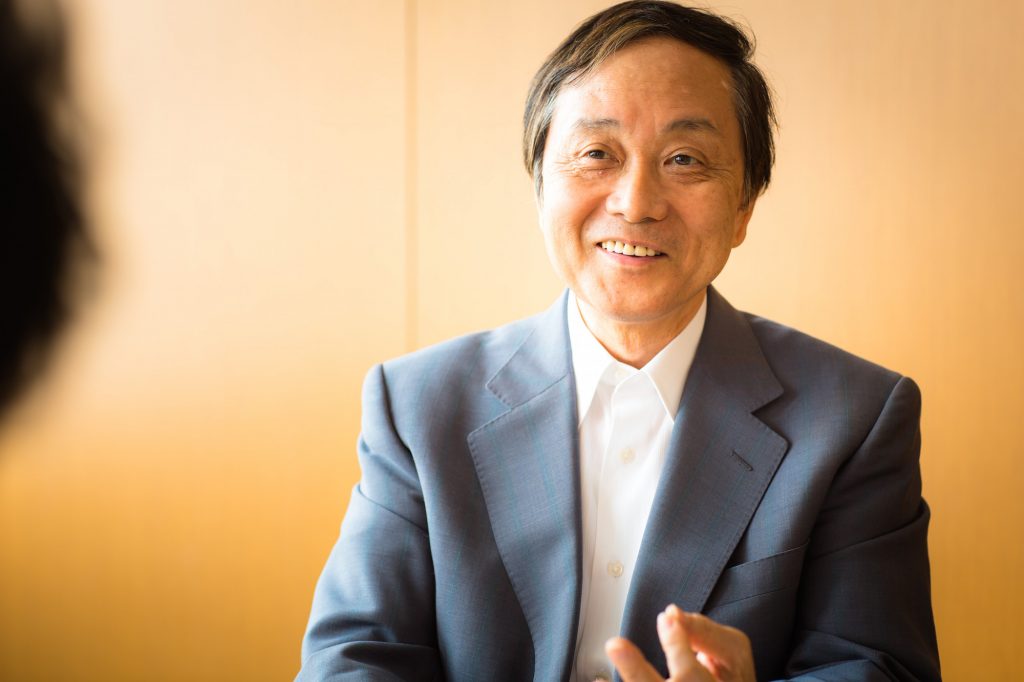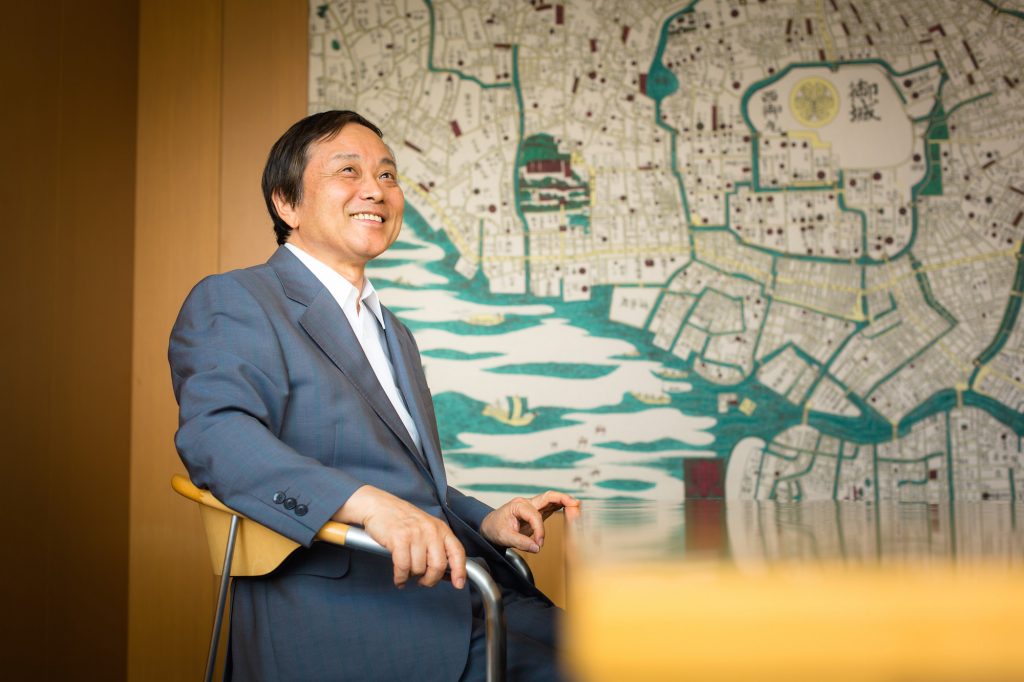How Should Tokyo Change for a Bright 2035?
ICF Committee Interview – Hiroo Ichikawa
How Should Tokyo Change for a Bright 2035?
Tokyo in 2035: Possible Futures from Changing Technologies and Values
The Innovative City Forum is an event that considers the future of cities and human lifestyles. The past three forums until last year have brought together leading thinkers from many fields to discuss a variety of conceptual topics. The goal for this year’s forum is to bring more specificity into the conversation.
The Mori Memorial Foundation first announced its Tokyo Future Scenario 2035 in 2011. The scenario presents several crossroads that Tokyo will surely face in the future, and, depending on the path chosen, it outlines four further potential scenarios: the Heavy Rain Scenario, the Long Rain Scenario, the Cloudy Sky Scenario and the Blue Sky Scenario. This year’s forum takes the most ideal of these scenarios, the Blue Sky Scenario, and focuses on one of its constituent parts—technology—in order to thoroughly consider Tokyo’s approach to its future.

In 2011, these four scenarios were still barebones, general frameworks. Now, in 2015, the goal of this ICF is to flesh out the details and present a more concrete view of life in Tokyo’s future. The field of technology in particular has grown spectacularly in the past five years. AI, which is already starting to have practical applications, will undoubtedly become a larger part our lives. Self-driving cars will become part of everyday lives as well, and perhaps the already-booming IoT point-of-sale (POS) regime that has integrated orders and sales will enter as part of household life. The goal of this year’s ICF is to provide as many specific examples as possible to foster discussion on Japan’s future centered around the theme of technology.
When technology evolves and enter our lives, it inevitably changes lifestyles and value systems. If robots become more capable of assuming human tasks, humans will have more free time. How will we use this newfound freedom? If self-driving cars and car-sharing become commonplace, surplus parking space will present new opportunities for cities. In this manner, technological growth changes human life and the very face of cities themselves. The session takes the four discussion points of Future Living, Future Work, Future Mobility, and Future Entertainment to provide a multi-faceted platform for discussing Tokyo’s future.

How Should Tokyo Approach the Olympics to Reach the Future It Desires?
When considering the year 2035 and Tokyo nearly 20 years in the future, the Tokyo Olympics are an unavoidable checkpoint. A mere four years away, the Olympics are naught but a milestone and a starting point for the future. Yet, the world-renowned event is also a crucial tool for building Tokyo’s future. Without an economic boost from the coming Olympics, the doors will close on the “Blue Sky Scenario” of Tokyo’s future.
What exactly does Japan need to improve its economic condition? Attracting foreign investment is the answer, perhaps, but things are not going well. Many believe the reason for the lack of foreign investment stems from a failure to communicate Tokyo’s attractiveness to the rest of the world. Whether from the perspective of economic strength or security, Tokyo is a world leader. Yet, much of the world seems to have missed this fact. Albeit a metropolis, Tokyo is a city of the Far East—investors often hesitate to involve themselves in places they have never visited. But it is also true that the very same hesitant people have a change of heart upon visiting Tokyo, becoming its lifelong fans. In this sense, the Tokyo Olympics are a spectacular opportunity to introduce Tokyo to the people of the world. The event may serve as a catalyst for foreign investment, which in turn will lead to a feed-forward cycle of regulatory reform and further foreign investment.
Normally, as economic recoil to massive investment into the Olympics, host cities experience a dip in their economies the following year. Tokyo’s heavy investment into the 1964 Olympics was followed by an economic nosedive. However, this phenomenon is unique to cities still in their developmental stage. As seen with the 1996 Atlanta Olympics and 2012 London Olympics, mature cities do not make careless investments and, instead of an economic slump, they are rewarded with growth. After the 2012 Olympics, London took the lead in our research lab’s GPCI (short for Global Power City Index, a comprehensive ranking of world cities). It has since continued as a standout leader. We believe the same will happen with Tokyo.

Concentrated but with Order : Tokyo’s Miraculous Strength
Tokyo ranks fourth in the aforementioned GPCI, but the city center (10km radius) and the metropolitan area (50km radius) are both first for their comprehensive strength. The Greater Tokyo Area has a population of 36 million—a number on a completely different scale from New York’s 27 million and London’s 16 million.
Usually, such a concentration of people in one location produces chaos. Yet, this does not occur in Tokyo. We Japanese do not realize this, but Tokyo is a miraculous city. A smoothly-functioning city of Tokyo’s scale is unheard of in urban planning theory. The more people and things gather, more inconsistency and chaos are generated. As such, standard theory recommends distributing population as much as possible. The reason for this miracle lies in the wisdom or unconscious ability of the Japanese people to function smoothly as a member of such an enormous city. If Tokyo achieves self-awareness of its own strengths, it will become much stronger. This is will then connect to our scenario of a brighter future.
ICF Unites Factors that Give Form to Urban Life
The Innovative City Forum provides a stimulating environment that ties together urban development, art, technology and biotechnology. The evolution of both technology and biotech changes human values while art broadens the horizons of city life. We all feel that these things are important for urban life, but no place has yet existed for them to be brought together and considered in a heterogeneous fashion. The ICF’s role of joining these moving parts and integrating them into Tokyo’s future is a rare sight, even on an international level. We believe this is an important opportunity for us Tokyoites to address our own future.

Hiroo Ichikawa
Professor and Dean, Professional Graduate School of Governance Studies, Meiji University / Executive Director, The Mori Memorial Foundation
Professor Hiro Ichikawa is the Dean of the Graduate School Governance Studies at Meiji University and also serves as Director of the Mori Memorial Foundation and as Head of Meiji University’s Research Center for Crisis and Contingency Management. He specializes in urban policy, urban and regional planning, and crisis management, with many publications on Tokyo and other large metropolitan areas. Publications include Tokyo’s Unpopular Concentration Will Save Japan (Discover 21, 2015), Tokyo 2025: Urban Strategy After the Olympics (Discover 21, 2015), Tokyo’s Future Strategy (Tokyo Keizai, 2012), The Real Reason Why a New Station Will Be Built on the Yamanote Line (Toshishuppan, 2012), Lessons from Japanese Disaster (Toyo Keizai, 2011), and Building Japan’s Future (Bungeishunju, 2009). Professor Ichikawa has served on many national and Tokyo policy committees, holding past positions as president of the Japan Telework Society and Japan Emergency Managers. He received his Bachelor of Engineering in Architecture and a Master of Engineering from Waseda University and his Ph.D. in Urban and Regional Planning from the University of Waterloo. He was born in Tokyo in 1947 and is a first-class registered architect.

